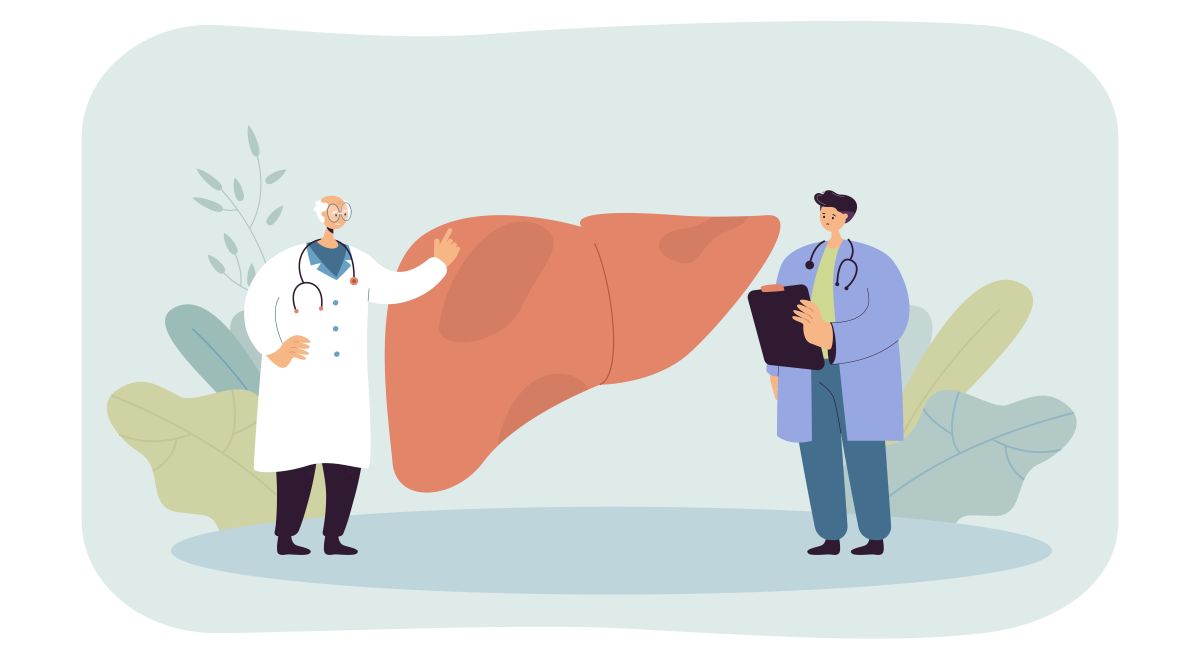
Knowledge Center

Liver Transplant Programme
| 18 October 2025
The liver is one of the most vital organs in the human body, responsible for detoxifying harmful substances, producing bile for digestion, storing nutrients, and regulating metabolism. However, when the liver becomes severely damaged due to chronic illness, infections, or lifestyle-related conditions, it may lose its ability to function effectively. At this critical stage, a liver transplant may be the only life-saving option. Recognizing the signs you may need a liver transplant early can make a huge difference in treatment outcomes. From visible symptoms like persistent jaundice, swelling, and extreme fatigue, to medical indicators like a rising MELD score, there are multiple red flags that should not be ignored. In this blog, we’ll discuss the causes of liver failure, stages of liver damage, key symptoms, medical indicators, and who qualifies as a candidate for transplant. Understanding these warning signals empowers patients and caregivers to seek timely expert care at Jaslok Hospital, Mumbai, a trusted leader in liver transplant surgery.
Liver failure is a serious medical condition that occurs when the liver loses its ability to perform essential functions. The causes are varied, ranging from chronic conditions to sudden illnesses. Some of the most common causes include:
Each of these conditions can slowly deteriorate the liver. The worrying part is that many patients remain asymptomatic until the damage is extensive. Recognizing risk factors and undergoing regular check-ups are key steps in preventing liver failure. At Jaslok Hospital, patients are offered state-of-the-art diagnostic tools to detect these conditions early and plan effective treatments, including transplantation if necessary.
Liver disease develops progressively, moving through distinct stages before reaching complete failure. Understanding these stages is crucial for timely intervention:
The progression from inflammation to failure may take years, but once cirrhosis develops, deterioration can be rapid. Early detection and intervention, including lifestyle changes and medications, can slow down progression. If left untreated, however, patients may require a liver transplant to survive. Hospitals like Jaslok Hospital provide multidisciplinary care to assess the exact stage of liver damage and recommend the right course of action.
Recognizing the warning signs of advanced liver disease is critical for timely intervention. The liver plays a central role in detoxifying the body, regulating metabolism, and supporting overall health. When it begins to fail, symptoms often appear gradually and may be mistaken for less serious conditions. However, persistent issues like jaundice, fluid retention, or extreme fatigue may signal severe liver damage that requires urgent evaluation. Understanding these symptoms not only helps patients seek medical care early but also allows doctors to determine whether a liver transplant could be the best treatment option. By staying alert to these changes, individuals and families can act quickly, ensuring a better chance at recovery and long-term health.
Jaundice is one of the earliest and most noticeable signs of liver dysfunction. It occurs when the liver cannot process bilirubin properly, leading to a yellowish discoloration of the skin and eyes. While mild jaundice may result from temporary conditions, persistent jaundice suggests severe liver damage. Patients often report dark urine, pale stools, and constant fatigue along with jaundice. If it continues despite treatment, it could be a warning sign of chronic liver disease or end-stage failure, requiring evaluation for a liver transplant. At Jaslok Hospital, expert hepatologists carefully assess the severity of jaundice using lab tests and imaging before recommending advanced interventions.
Another common indicator of advanced liver disease is ascites, which is the buildup of fluid in the abdomen. This condition arises due to increased pressure in the liver’s blood vessels (portal hypertension) and reduced protein production. Patients experience abdominal swelling, discomfort, and shortness of breath. Repeated fluid drainage may provide temporary relief, but ascites that recurs despite treatment is a strong sign of end-stage liver disease. Such cases often point toward the need for a liver transplant. Jaslok Hospital offers advanced therapeutic options to manage ascites while preparing patients for potential transplant surgery.
When the liver cannot filter toxins from the blood, these toxins affect brain function, leading to hepatic encephalopathy (HE). Symptoms range from forgetfulness, mood changes, and difficulty concentrating to severe confusion and even coma. HE can drastically impact quality of life and may indicate that the liver is failing. While medications may manage mild HE, recurrent or worsening cases often suggest the need for transplantation. Recognizing early warning signs like sleep disturbances, irritability, or memory lapses is critical. At Jaslok Hospital, doctors provide comprehensive care to stabilize HE patients while preparing them for a safe liver transplant if required.
Extreme fatigue and weakness are hallmark symptoms of chronic liver failure. Unlike normal tiredness, this fatigue persists despite rest and interferes with daily activities. It results from the liver’s reduced ability to metabolize nutrients and regulate energy production. Patients often find themselves unable to perform basic tasks, which significantly lowers their quality of life. If fatigue is severe and accompanied by other symptoms such as jaundice, swelling, or confusion, it may point to advanced liver disease. In such cases, a liver transplant becomes a possible solution for restoring health and vitality.
The liver is responsible for producing clotting factors. When it becomes damaged, blood clotting weakens, leading to frequent bleeding and easy bruising. Patients may notice nosebleeds, gum bleeding, or excessive bleeding from minor cuts. This not only indicates impaired liver function but also poses serious health risks. Uncontrolled bleeding in advanced cases can be life-threatening, necessitating immediate medical attention and possible evaluation for a liver transplant.
Also known as edema, swelling in the lower limbs is another symptom of advanced liver disease. It occurs when the liver cannot produce enough albumin, a protein that helps regulate fluid balance in the body. As a result, fluid leaks into tissues, especially in the legs and ankles. Persistent or worsening swelling despite medications is a clear sign of severe liver dysfunction. At Jaslok Hospital, experts evaluate whether patients experiencing edema are progressing toward liver failure and may require transplant surgery.
Chronic itching (pruritus) is another lesser-known but distressing symptom of liver disease. It is caused by bile salts accumulating in the bloodstream due to poor liver function. Patients often report intense itching, especially at night, which affects sleep and quality of life. Persistent and unexplained itching, particularly when combined with jaundice or fatigue, should not be ignored. It can be a subtle but critical indicator that the liver is failing and transplant evaluation is necessary.
As the liver fails, patients frequently experience nausea, vomiting, and loss of appetite. These symptoms stem from the buildup of toxins in the body and poor bile flow. Over time, they can lead to malnutrition and weight loss, further weakening the patient. Persistent digestive issues, particularly when associated with other liver-related symptoms, are red flags for advanced disease. At Jaslok Hospital, doctors assess such patients thoroughly to determine if a transplant is the most effective treatment.
Unexplained weight loss and muscle wasting are severe signs of end-stage liver disease. The body begins breaking down muscle tissue due to the liver’s inability to process nutrients effectively. Patients often appear frail, with noticeable loss of muscle mass in arms, legs, and face. This condition, known as sarcopenia, not only lowers physical strength but also increases risks during surgery. For patients showing significant muscle loss, a liver transplant may be the only option to restore strength and health.
While visible signs such as jaundice, fatigue, or swelling may point toward liver failure, doctors rely on specific medical indicators to assess the true extent of liver damage. These indicators go beyond what patients can see or feel, offering an objective and scientific evaluation of liver function. Diagnostic tests like liver function tests, imaging scans, and biopsy results provide valuable insights into how well the liver is working. Additionally, scoring systems such as the MELD score (Model for End-Stage Liver Disease) help specialists determine the urgency of a liver transplant and prioritize patients on the waiting list. By combining symptoms with medical evidence, healthcare providers ensure timely and accurate decisions that could save lives.
In addition to physical symptoms, laboratory test results play a crucial role in determining the need for a liver transplant. Common tests include:
These results help doctors assess the liver’s current functioning and predict long-term outcomes. When combined with worsening symptoms, abnormal labs strongly suggest the need for transplantation. Jaslok Hospital uses advanced diagnostic technology to ensure accurate assessments, ensuring timely transplant referrals.
The MELD (Model for End-Stage Liver Disease) score is a globally recognized system for prioritizing liver transplant patients. It is calculated based on bilirubin, INR, and creatinine levels. A higher MELD score indicates a greater urgency for transplant. For example:
This scoring system ensures that patients at the highest risk receive transplants first. At Jaslok Hospital, doctors carefully monitor MELD scores to determine the right timing for surgery, maximizing survival rates and improving patient outcomes.
Not every individual with liver disease is considered an immediate candidate for a liver transplant. Doctors carefully evaluate patients to ensure that the surgery will provide the greatest benefit and long-term success. Eligibility is determined based on several medical and lifestyle factors:
By conducting thorough evaluations, specialists ensure that liver transplants are offered to patients who have the highest chances of recovery, long-term survival, and improved quality of life.
Related: Liver Transplant 101: Everything Patients and Families Need to Know
Many patients delay seeing a liver specialist (hepatologist) until their disease is advanced, which can reduce treatment options. If you experience symptoms like persistent jaundice, unexplained fatigue, recurrent bleeding, or abdominal swelling, it is critical to consult a specialist immediately. Early evaluation allows doctors to slow disease progression, manage complications, and, if needed, prepare for transplantation. Jaslok Hospital in Mumbai is a trusted destination for liver care, offering comprehensive diagnostic services, advanced treatment options, and world-class transplant facilities. Timely action can make the difference between life-threatening complications and successful recovery.
A liver transplant is often the last and most effective treatment for patients with end-stage liver disease. Recognizing the early signs, from persistent jaundice and swelling to confusion and weight loss, can save lives. Equally important are medical indicators like abnormal lab tests and high MELD scores that guide doctors in decision-making and timely intervention. Choosing the right hospital ensures safety, surgical success, and long-term well-being for patients and their families.
For individuals seeking world-class treatment, Jaslok Hospital, Mumbai stands as a leader in liver transplantation. With highly experienced transplant surgeons, advanced technology, dedicated pre- and post-operative care, and personalized treatment plans, Jaslok consistently transforms critical diagnoses into inspiring stories of recovery, resilience, and renewed life. The hospital’s holistic approach ensures not only survival but also a return to a healthier, more fulfilling future.
Signs may include jaundice returning, confusion, swelling, and abnormal lab results. Immediate medical evaluation is crucial.
It depends on the stage of disease. Patients with end-stage liver failure often need urgent transplants, as survival without surgery may be only weeks to months.
While no surgery guarantees 100% success, liver transplants today have survival rates above 85–90% in the first year. With expert care at Jaslok Hospital, many patients live for decades post-transplant.
All Copyrights Reserved. © 2025 Jaslok Hospitals | Managed by Digimanic